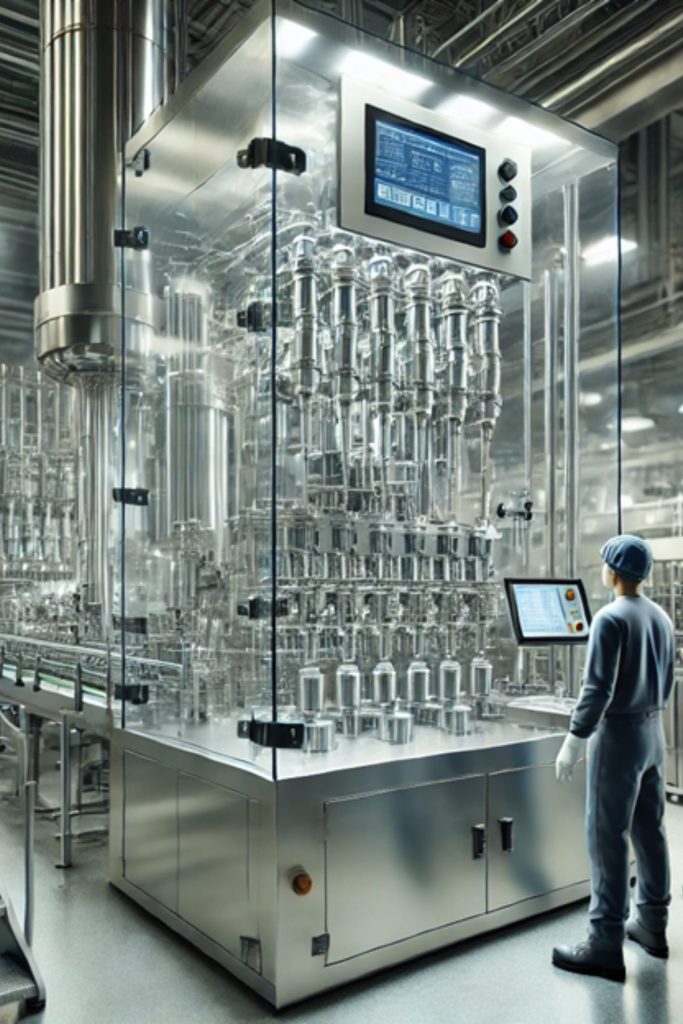In the ever-evolving landscape of industrial manufacturing, filling machines play a pivotal role in ensuring efficiency, precision, and scalability. These machines are integral to a wide array of industries, from food and beverage to pharmaceuticals and cosmetics.
As consumer demand grows and product lines diversify, the need for advanced filling solutions becomes increasingly critical. Filling machines are designed to handle various types of products, including liquids, powders, and granules, with remarkable accuracy and speed. This article delves into the significance of filling machines in modern manufacturing, exploring their functionalities, benefits, and the technological advancements that continue to shape their development.
The Role of Industrial Filling Machines in Modern Manufacturing
Industrial filling machines are essential components in the production lines of numerous industries. Their primary function is to fill containers with a specified amount of product, ensuring consistency and quality across all units. This process is crucial for maintaining product integrity and meeting regulatory standards. This versatility allows them to accommodate a wide range of container sizes and product types, making them indispensable in sectors such as food and beverage, pharmaceuticals, chemicals, and cosmetics.

In the food and beverage industry, filling machines are used to package everything from carbonated drinks to sauces and condiments. These machines must adhere to strict hygiene standards to prevent contamination and ensure consumer safety. In the pharmaceutical sector, precision is paramount, as even the slightest deviation in dosage can have significant implications. Filling machines in this industry are equipped with advanced features to handle sensitive and sterile products with utmost care.
The cosmetics industry also relies heavily on filling machines to package products like creams, lotions, and perfumes. They are designed to handle viscous and semi-viscous substances, ensuring that each container is filled accurately and efficiently. The ability to switch between different product types and container sizes with minimal downtime is a key advantage of modern filling machines, enhancing productivity and reducing operational costs.
For more information on the various types of filling machines available and their applications, visit https://stm-pack.com/products/filling-machines/.
Technological Advancements in Filling Machines
The evolution of filling machines has been driven by technological advancements aimed at improving efficiency, accuracy, and flexibility. Automation is a significant trend in the industry, with many modern ones incorporating sophisticated control systems and sensors. These technologies enable real-time monitoring and adjustments, ensuring optimal performance and reducing the risk of errors.
One of the most notable advancements is the integration of programmable logic controllers (PLCs) and human-machine interfaces (HMIs). These systems allow operators to easily configure and control the filling process, enhancing user-friendliness and reducing the need for extensive training. Additionally, the use of robotics in filling machines has increased, providing greater precision and the ability to handle complex tasks with ease.
Another significant development is the implementation of clean-in-place (CIP) systems, which streamline the cleaning process and minimize downtime. CIP systems are particularly beneficial in industries where hygiene is critical, such as food and pharmaceuticals. By automating the cleaning process, manufacturers can maintain high standards of cleanliness while maximizing production efficiency.
The adoption of IoT (Internet of Things) technology is also transforming the filling machine landscape. IoT-enabled machines can communicate with other devices and systems, providing valuable data insights that can be used to optimize production processes and improve decision-making. This connectivity allows for predictive maintenance, reducing the likelihood of unexpected breakdowns and extending the lifespan of the equipment.
Benefits of Using Filling Machines in Manufacturing
The use of filling machines in manufacturing offers numerous benefits that contribute to the overall success and competitiveness of a business. One of the primary advantages is increased efficiency. They can operate at high speeds, significantly reducing the time required to package products. This efficiency translates to higher production rates and the ability to meet growing consumer demand.
Consistency and accuracy are also critical benefits of using filling machines. They are designed to dispense precise amounts of product, ensuring uniformity across all units. This consistency is essential for maintaining product quality and meeting regulatory requirements. By minimizing variations in product quantity, manufacturers can enhance customer satisfaction and build brand loyalty.
Filling machines also offer flexibility, allowing manufacturers to adapt to changing market demands. Many machines are equipped with adjustable settings and interchangeable parts, enabling them to handle different product types and container sizes with ease. This adaptability is crucial for businesses looking to expand their product lines or enter new markets.
Furthermore, the use of them can lead to cost savings. By automating the filling process, manufacturers can reduce labour costs and minimize the risk of human error. The increased efficiency and reduced waste associated with filling machines also contribute to lower operational costs, improving the overall profitability of the business.
Images supplied











